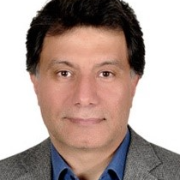Abstract
The main objective of this study was to evaluate the nutritional related lifestyle patterns of newly-diagnosed type 2 Diabetes Mellitus pa-tients in the City of Ahvaz, Iran. Materials and Methods: One hundred and one type 2 Diabetic subjects who had been referred to the Ahvaz Diabetes Center completed the knowledge, attitude and practice (KAP), food frequency, lifestyle and anthropometric ques-tionnaires in a cross – sectional study. Variables collected were socio-economic status, blood lip-ids and sugar levels, anthropometric indices, daily activity patterns, dietary habits, nutritional knowledge and medical histories. The percent of body fat (BF%) was measured using bioelectrical impedance analysis (BIA) method and obesity was defined according to this variable. Results: Mean of the subjects’ age was 52±9.6 years (67% female). Based on the BF%, more than 60% of women and about half of the men were overweight and / orobese. As a criterion for metabolic syndrome, 88.2% of women and 21.2% of men had abdominal obesity. Thirty-one per-cent of the subjects consumed hydrogenated fats, and 25% consumed dry fruits as sweeteners. Moreover, 69% of subjects had no information on starchy foods glycemic index. Half of the sub-jects were diagnosed as hypercholesterolemic, 57% had TG levels above the recommended lev-els, and 8 percent had hypertension. Conclusion: The prevalence of overweight, cen-tral obesity, hypercholesterolemia, and hyper-triglyceridemia in type II diabetic patients was high with trunk adiposity being more prevalent in females. Patients need to be educated on how to prevent this risk factors and healthier nutri-tional lifestyles.
Keywords
Full Text
Full text is available in PDF
